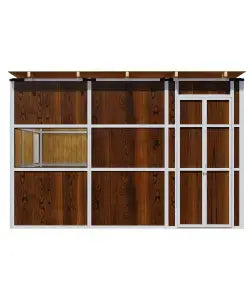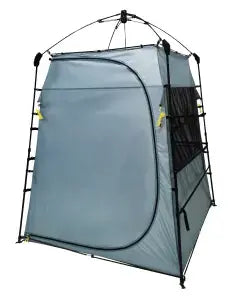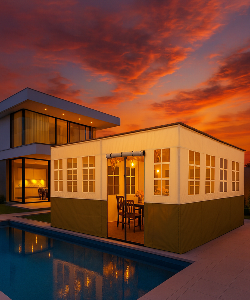How to Build a Sukkah: A Complete Guide to Construction

Learning how to build a sukkah might seem daunting at first, but here's the thing nobody tells you: it's supposed to be temporary, which means it doesn't have to be perfect. In fact, the whole point is that it's not permanent—so let's ditch the anxiety about creating some Pinterest-worthy masterpiece and focus on building something meaningful.
What is a Sukkah Used For?
A sukkah is a temporary structure used during the Jewish holiday of Sukkot. It represents the booths that the Israelites lived in during their 40-year journey through the desert. Today, it serves as a physical space for Jewish families to eat meals, pray, and spend time in reflection and celebration.
-
Used for: Eating meals, hosting guests, saying blessings, and sometimes sleeping.
-
Symbolism: Impermanence, divine protection, and gratitude for the harvest.
The sukkah connects past and present, turning backyards, balconies, and patios into spiritual sanctuaries.
The Easiest Sukkah to Build: A Simple Guide for Beginners
Looking for the easiest sukkah to build? Try this layout:
-
Walls: Use an existing wall (house, garage, or fence) as one side, and add two freestanding walls with canvas or wood.
-
Size Requirements: Minimum 40 inches high and enough space for one person and a small table.
-
Materials: 2x4 lumber, PVC pipes, or metal frames work well for stability.
-
Flexibility: Opt for a pre-fabricated sukkah kit if you're short on time or space.
Choosing the Right Schach for Your Sukkah
Schach is the most important and most specific part of the sukkah.
-
What qualifies: Bamboo mats, palm fronds, tree branches, pine needles, or corn stalks.
-
What doesn’t work: Plastic, metal, synthetic materials, or anything still attached to the ground.
-
Halachic Rule: Must provide more shade than sunlight but still allow visibility of stars.
-
Support: Schach must rest on kosher supports, not directly on metal or plastic.
Sukkah Decorating Ideas to Make It Festive
Once built, your sukkah becomes a centerpiece of your Sukkot experience. Here are sukkah decorating ideas to inspire:
-
Hanging fruits & vegetables: Pomegranates, gourds, lemons, or apples bring in harvest symbolism.
-
Paper chains & artwork: Great for kids and school projects.
-
Lights: Battery-powered string lights or lanterns enhance nighttime ambiance.
-
Themes: Try rotating yearly themes like gratitude, family stories, or Jewish heroes.
-
Photos & posters: Add family pictures, blessings, or educational prints.
Ready to Start Your Sukkah Project?
Sukkah Market offers everything you need, from bamboo schach mats to complete sukkah building instructions. Even if you're interested in decorating a sukkah or need to contact Sukkah Market for personalized advice, we're here to help. Learning how to build a sukkah is the first step toward creating meaningful holiday memories that will last long after the temporary structure comes down.







